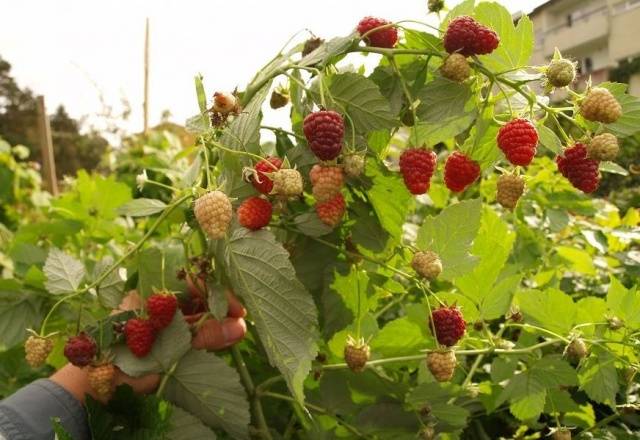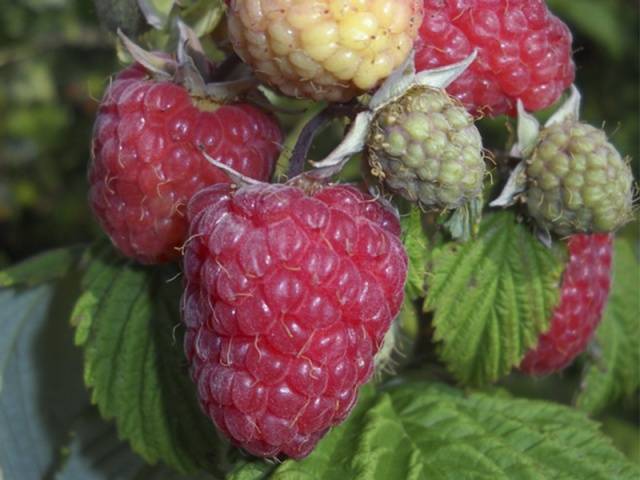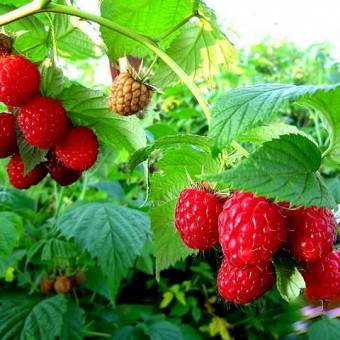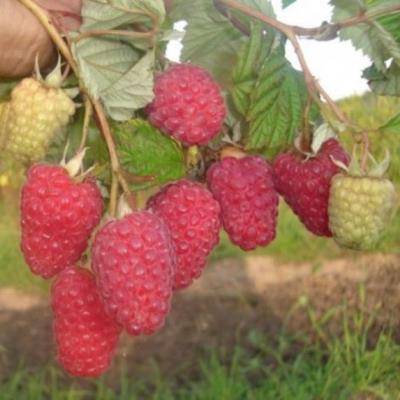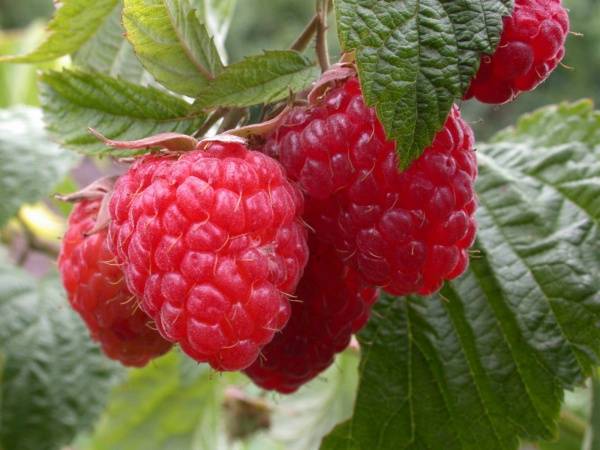Content
One of the most famous late-ripening varieties of large-fruited raspberries in Russia is Stolichnaya raspberry. Despite its rather considerable age, this variety has not yet lost its popularity and it is happily grown by both farmers and ordinary summer residents.
Although late-ripening raspberry varieties are in third place in popularity after early-maturing and remontant varieties, they also have their advantages. The flowers of late-ripening raspberries are no longer afraid of even the latest spring frosts, and the harvests are distinguished by their abundance and amicable ripening. Late-ripening varieties of raspberries are especially interesting for those gardeners who are engaged in growing berries for sale, because raspberries are becoming very popular this season.
Description of the variety
The Stolichnaya raspberry variety is one of the creations of the famous professor V.V. Kichina, from whose hands came many amazing varieties of raspberries. It was received at the All-Russian Institute of Selection and Technology of Horticulture and Nursery in 1981. For several years, he successfully passed the tests.
Raspberry bushes Stolichnaya are distinguished by a rather powerful growth force, reaching a height of 1.5-2 meters, depending on the region and growing conditions. Shoots are erect and grow very compactly, primarily due to the fact that they form a very small number of replacement shoots, literally 3-4 per bush. Very little root growth is also formed. In a sense, this can be called the dignity of Stolichnaya raspberries, since raspberries do not scatter around the site and their care is simplified.
But most gardeners regard this quality of raspberries as a disadvantage. Indeed, judging by the description of the variety and the excellent reviews of gardeners, many would like to have Stolichnaya raspberries on their plots. But a small multiplication factor forms too high prices for raspberry seedlings of this variety.
Annual shoots of medium thickness have a small waxy bloom and are characterized by the absence of thorns, which is one of the advantages of the Stolichnaya raspberry, since it greatly facilitates the picking of berries and caring for the shrub.
The leaves are small to medium in size, sparsely located, and can range in color from light green to green.
A feature of Stolichnaya raspberry, like many large-fruited varieties, is that the fruit twigs are capable of branching strongly and thus forming not 8-15 berries, like ordinary traditional varieties of raspberries, but 20-40.
As already mentioned, the Stolichnaya raspberry variety is medium late - this means that the berries begin to ripen on the bushes around mid-July, and you will be provided with a large and tasty berry throughout the second half of July.
This ripening period makes it possible to fill the gap between the usual mid-season raspberry varieties, ripening in the first half of July, and remontant varieties, the berries of which begin to ripen by the end of July - beginning of August. Thus, by planting Stolichnaya raspberries along with other varieties of different ripening periods, you can provide yourself and your family with an uninterrupted supply of raspberries throughout the warm season.
In more northerly regions, it is still recommended to bend the branches to the ground and cover them in order to guarantee an annual harvest.
One of the advantages that Stolichnaya raspberry is famous for is its relatively high resistance to diseases. This raspberry variety shows high resistance to anthracnose and kidney and spider mites. Susceptibility to verticillary wilt and purplish blotchiness is more noticeable, but still does not go beyond traditional varieties.
Characteristics of berries
What cannot be ignored when talking about the characteristics of Stolichnaya raspberries is their size. The variety is a typical representative of large-fruited raspberries, and the average weight of one berry is 6-8 grams. At the same time, individual copies can reach 20 grams.
The berries are easy to pick and have an attractive elongated-conical shape. When fully ripe, they turn a traditional raspberry red color. Drupes are large in size, well adhered to each other.
The pulp is dense, aromatic, has a pleasant sweet and sour dessert taste. In general, among large-fruited varieties of raspberries, Stolichnaya raspberries are characterized by the most intense and sweet taste. However, as in many other things, the taste of berries is largely determined by the growing conditions, the composition of the soil and the agricultural technology used.
When harvesting, the berries are easily removed from the fruit, during storage they do not crumple or flow and therefore can be transported well if you follow the usual care for raspberries.
The use of Stolichnaya raspberries is universal - they are suitable both for eating fresh and for all kinds of preparations for the winter, for drying and freezing.
Advantages and disadvantages
It seems that the Stolichnaya raspberry variety consists mainly of advantages alone:
- Large berry sizes;
- Decent taste;
- Excellent productivity;
- Compact growth, low shoot-forming ability and the absence of thorns greatly facilitate care;
- Disease resistance and relatively high winter hardiness.
Yes, all this is true, but, like any large-fruited variety of raspberries, Stolichnaya requires increased attention. And all these advantages will be fully revealed only with careful and thoughtful care.
In addition, as mentioned above, for many gardeners, especially those engaged in breeding raspberries for sale, the small number of replacement shoots and root shoots formed is rather a disadvantage, since it does not make it possible to fully propagate this raspberry variety.
Planting and leaving
When planting Stolichnaya raspberries, you should follow the standard rules that are suitable for almost any type of raspberry.
- The place should be chosen the brightest, illuminated by the sun for most of the day.
- The soil for planting should be loose, fertile, retain moisture well and be neutral in acidity.
- Raspberries he especially loves organic fertilizers, therefore, when planting, it is good to add 1-2 buckets of humus or decomposed manure per square meter of planting to the planting soil.
- If the soil is acidic, you can add wood ash or lime or dolomite flour.
- Raspberry bushes are planted either in shallow planting holes, or in small trenches to a depth of 30-40 cm. The seedlings should not be buried.
- To compact the soil, it is necessary to shed the soil well immediately after planting, using at least 30-40 liters per linear or square meter of planting.
- Although the shoots of Stolichnaya raspberry are durable, compact and straight-growing, the installation of a trellis for growing raspberries is highly recommended by specialists.Since the garter to the supports of raspberry shoots not only facilitates harvesting, but also ensures the ventilation of the bushes and their uniform illumination throughout the day.
In the future, the main procedures in caring for raspberries are regular abundant watering and pruning of bushes to increase yields.
Fruiting shoots of the second year of life can be cut out completely either immediately after the end of fruiting, or in late autumn when preparing raspberries for winter.
But it is advisable to shorten the new one-year growth by 10-15 cm around the end of May - beginning of June, in order to stimulate the formation of additional fruit branches.
Gardeners reviews
Raspberry Stolichnaya quite deservedly enjoys the sincere love of gardeners and the reviews about her are mostly enthusiastic. Some people are not satisfied with the taste of berries, but after all, the taste characteristics not only depend on care, but they are also a very subjective parameter.
Conclusion
Raspberry Stolichnaya appears before us as a variety with practically no flaws. Indeed, any connoisseur of raspberries will want to have a large, tasty berry with a decent yield and good disease resistance in their garden. It's just that it's unlikely to be able to multiply it quickly, but there are so many interesting varieties in the world to maintain diversity that it is not necessary to focus on only one raspberry, even if it is worthy in many respects.
